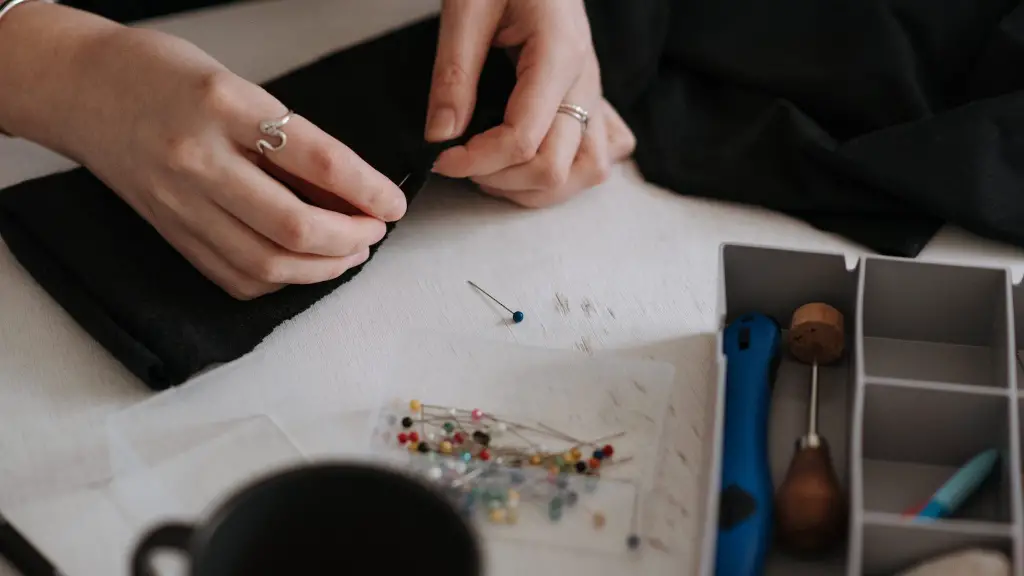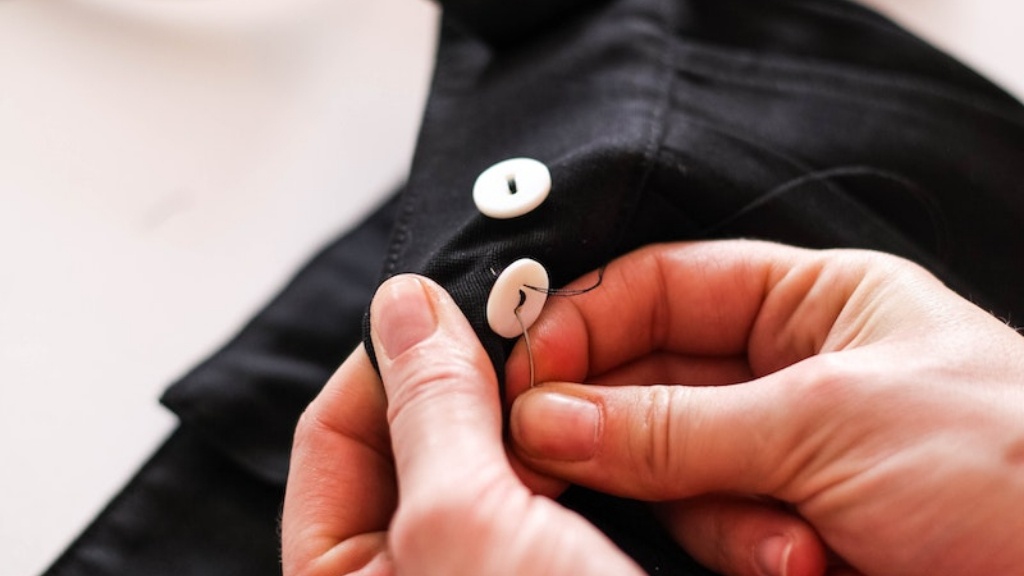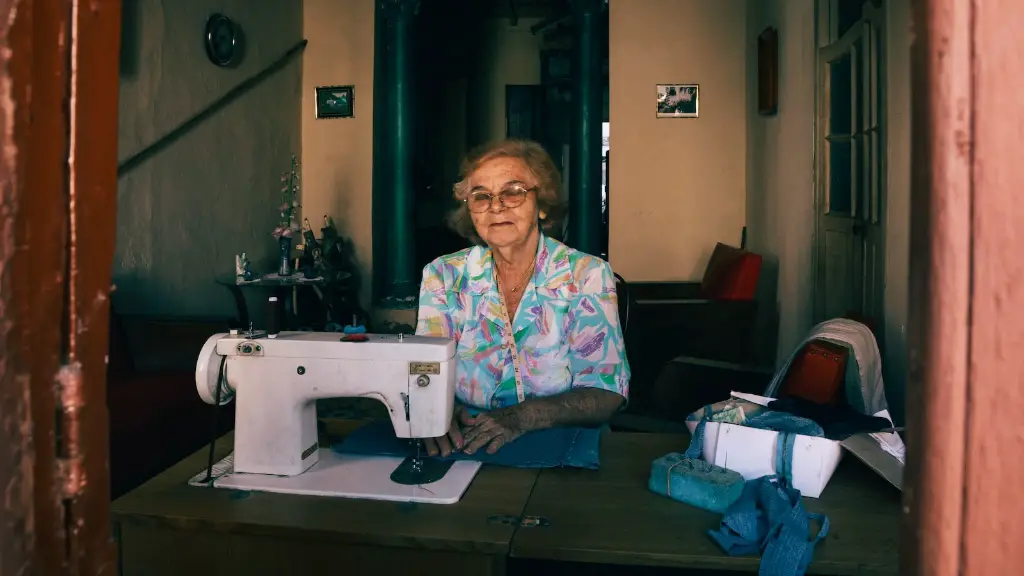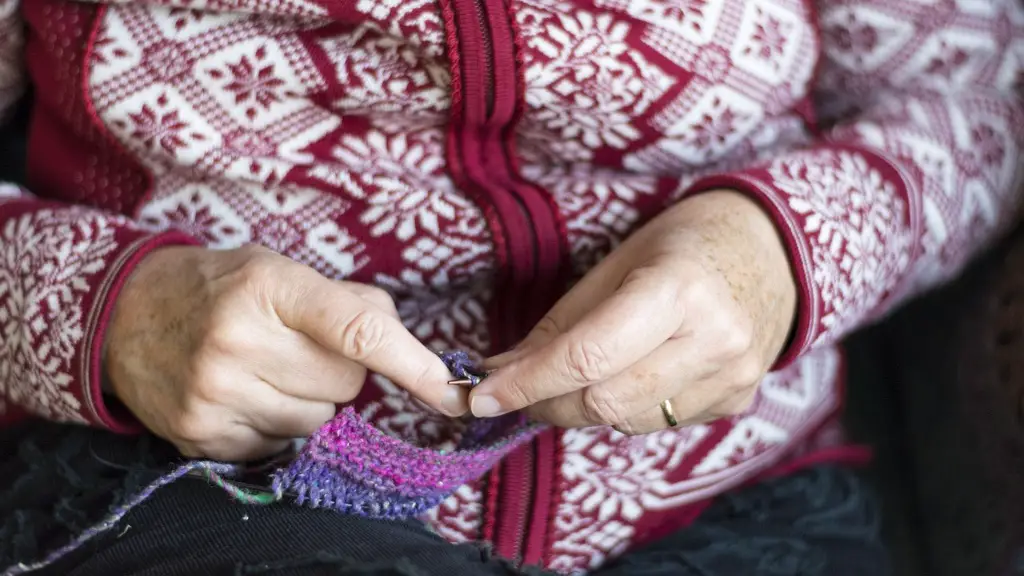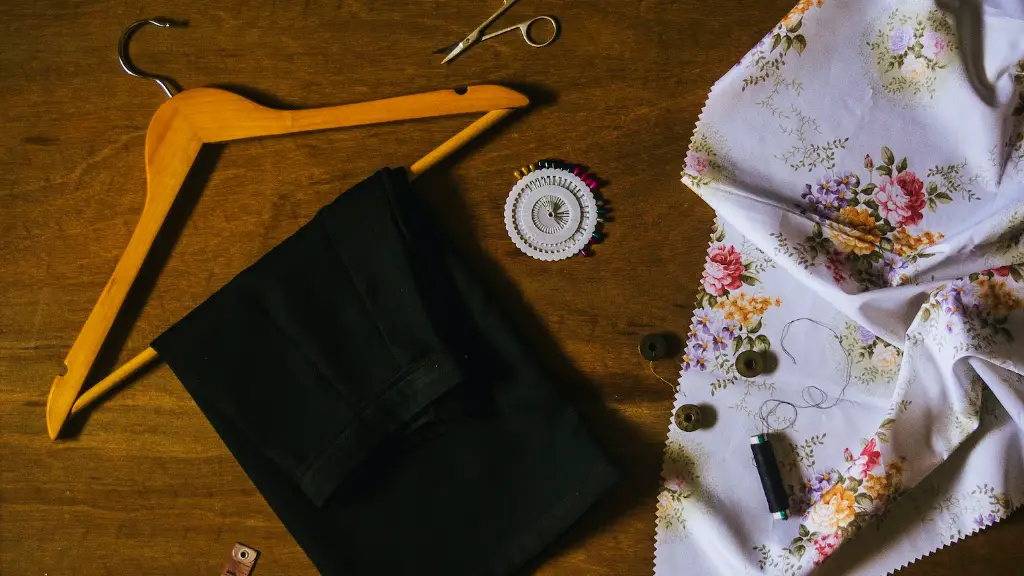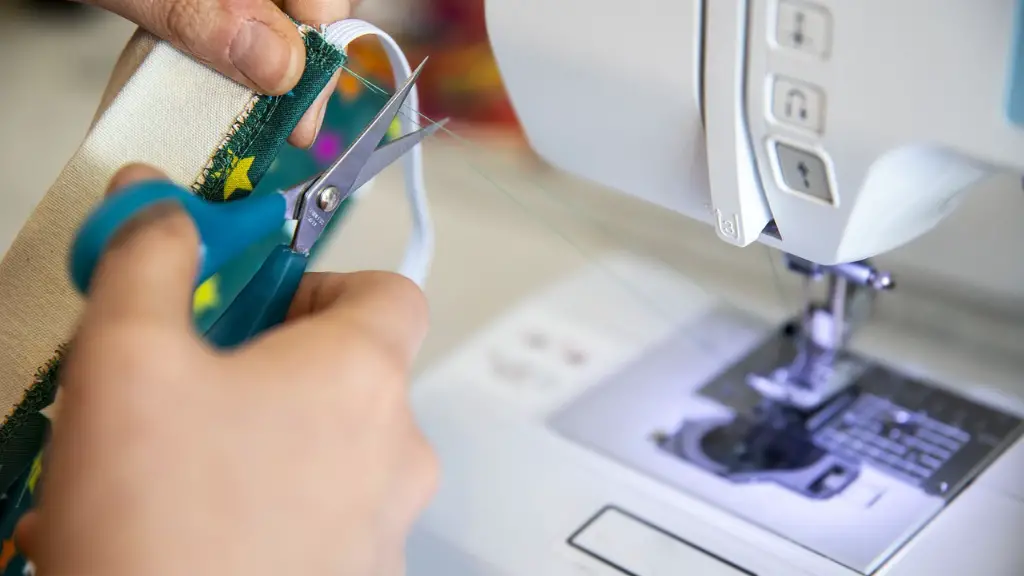Embroidery is a fun and intricate way to engage in fabric arts and to add a special touch to any project. There are traditional embroidery techniques that take some skill and expertise to master, but with a sewing machine and some basic knowledge of embroidery techniques, you can make all sorts of stylish designs. Doing embroidery stitches on a sewing machine requires focusing on the stitch patterns and knowing the differences between the various stitch types. Before beginning an embroidery project, it is important to have a good understanding of the materials and tools needed to achieve desired results.
When it comes to materials, the type of fabric used should be appropriate for the project. Polyester, cotton and linen fabrics work best for embroidery designs. Fabrics like velvet, taffeta and other fabrics with a short nap should be avoided, as they can make the embroidery design look lumpy. Additionally, special embroidery needles are also important to achieve desired results. The embroidery needle should be sharp and the size chosen should be appropriate for the fabric and thread being used.
When it comes to threads, the type chosen can make a big difference in the overall results. A good quality thread is an important factor in achieving the best embroidery stitch patterns. Embroidery threads can be made of polyester, cotton or silk, and the recommended thread size should be based on the fabric and design chosen. Additionally, when using a sewing machine for embroidery, it is also important to choose the right embroidery foot. There are many types available, such as a darning foot, a free-motion foot and a walking foot.
Once the materials have been established, it is time to focus on the stitches. Before beginning an embroidery project, it is important to practice the stitch patterns to become comfortable with the motions. Additionally, it can also be helpful to draw a pattern directly onto the fabric to get an idea of the overall design. When starting a machine-embroidery project, it is recommended to start with a line stitch, such as the zigzag stitch. This is one of the most common types of stitches and can be customized to any size. Once comfortable with the line stitch, other basic embroidery stitches should be practiced, such as the satin stitch and the backstitch. Additionally, decorative stitches can also be used for more intricate designs.
Designing Patterns
When it comes to designing patterns for embroidery, it is important to remember to keep the design relatively simple. Complex patterns can be difficult to achieve with a sewing machine and may require the use of hand-sewing techniques. It is also important to keep the stitch size consistent throughout the design, as this will help to ensure a neat and professional result. Additionally, it is important to remember that stitches should flow and not overlap, in order to ensure a nice even stitch throughout the entire design.
Another important factor when designing patterns for a machine-embroidery project is color. Choosing the right colors can make a huge difference in the overall look of the project. It is important to consider the fabric color and the type of thread being used, in order to decide on the best colors for the pattern. Additionally, using multiple colors can add depth and interest to the design.
Finally, it is important to think about the sequence of the stitching when designing patterns for a machine-embroidery project. The order of the stitches can be crucial in achieving desired results. While it is tempting to jump around the design and stitch whatever looks interesting, it is much easier to achieve a professional looking result if the stitch sequence is planned out in advance. This will also help to create a consistent and even finish to the project.
Transferring Patterns
When it comes to machine-embroidery projects, transferring the design onto the fabric is a crucial step. Transferring a pattern may seem daunting, but there are a few different methods that can make the process easier.
One option is to use transfer paper, which is a special type of paper that can be used to easily trace the design onto the fabric. Another option is to use an embroidery hoop, which is a type of frame used to hold the fabric in place while the design is being stitched. Lastly, an embroidery machine can also be used to transfer a design onto the fabric. Embroidery machines are specially designed to make the process of transferring patterns easier and more efficient.
Once the design has been transferred onto the fabric, it is important to remember to stitch in the same direction throughout the entire project. This will help to ensure a consistent and even look to the finished product. Additionally, it is important to remember to press the fabric between each and every stitch, in order to flatten out the fabric and make the embroidery look professional.
Finally, it is important to remember to check the tension of the thread throughout the entire project. This will help to ensure that the stitches look even and the thread does not break during the stitching process. Additionally, it can also be helpful to check the stitches frequently to ensure that they are tight and even. This will help to ensure that the embroidery will last for a long time and keep its shape and design.
Finishing Up
Once the embroidery stitches have been completed, it is important to press the fabric once again to flatten out the stitches and make sure that the design looks even and professional. Additionally, it is important to check the back of the fabric to ensure that the stitches are secure and have not come loose. Once the project is complete, the fabric can be cut to the desired size and shape, and the design should then be carefully ironed with a pressing cloth to make sure that the stitches do not get distorted.
Embroidery can be a great way to add detail to any project and to make it stand out from the crowd. With a sewing machine and some basic knowledge of embroidery techniques, it is possible to create intricate and beautiful designs. Doing embroidery stitches on a sewing machine requires time and patience, but with the right tools and materials, it is possible to achieve professional-looking results.
Troubleshooting Common Mistakes
When it comes to machine-embroidery projects, there are some common mistakes that can happen. One of the most common mistakes is using the wrong type of thread for the project. Using a thread that is too thick or too thin can cause the stitches to be uneven and can affect the overall look of the design. Additionally, it is important to keep the tension of the thread consistent throughout the entire project, as this can also cause uneven stitches.
Another common mistake is using a needle that is too large or too small for the project. The size of the needle should be appropriate for the fabric and the thread being used. Additionally, it is important to make sure that the needle is sharp and not bent, as this can also cause uneven stitches and distorted designs.
Another mistake can be using a sewing machine that is not suitable for the project. It is important to make sure that the machine is in good working order and can handle the type of fabric being used. Additionally, it is important to make sure that the machine is properly threaded and the tension is correctly adjusted, as this can also have a big impact on the quality of the embroidery.
Finally, it is important to remember that embroidery can be a very delicate process. It is important to take your time and focus on the details in order to achieve the best results. Additionally, it is important to practice the stitch patterns before beginning the project, as this will help to ensure that the stitches are even and the design looks professional.
Storing and Preserving Embroidery Projects
Once an embroidery project is complete, it is important to think about how the design will be stored and preserved. One option is to create an embroidery hoop cover, which is a type of casing that can be used to hang the embroidery design up and keep it dust-free. Additionally, it is also important to make sure that the embroidery is stored in a dry, dark place and away from direct sunlight, as this can cause the colors to fade and distort the design.
Another option is to use an embroidery box, which is a type of storage box specifically designed for embroidery designs. These boxes are airtight and can help to protect the design from dust and dirt. Additionally, it is also important to protect the embroidery from humidity, as this can also cause the fabric to deteriorate and the design to become warped over time.
Finally, it is also important to remember to wash the fabric with a mild detergent and air-dry before storing the design. This will help to keep the fabric clean and cared for and will make sure that the design looks as good as new for many years to come.
Stitching with a Regular Sewing Machine
In addition to using a special embroidery machine, it is also possible to do embroidery with a regular sewing machine. While it is not as easy to create intricate designs with a regular sewing machine, it is still possible to create simple and elegant patterns. Additionally, using a regular sewing machine can be a great way to get familiar with the basics of embroidery before investing in a more expensive machine.
When it comes to using a regular sewing machine for embroidery, the most important factor is the type of fabric being used. Polyester, cotton and linen fabrics work best for machine-embroidery projects. It is important to avoid fabrics with a short nap, such as velvet and taffeta, as these can cause the stitches to look lumpy and can make the design hard to see. Additionally, it is important to remember to check the tension of the thread throughout the entire project, as this can have a big impact on the overall results.
When it comes to choosing threads for machine-embroidery projects, it is important to choose a thread that is the right size for the fabric and the design. Additionally, it is important to consider the type of thread being used, as different threads may react differently when stitched on the sewing machine. Lastly, when it comes to stitching designs with a regular sewing machine, it is important to remember to stitch slowly and take your time. This will help to ensure that the stitches look even and the design looks professional.
Summary
Embroidery is a great way to add a special touch to any project and to make it stand out from the crowd. With a sewing machine and some basic knowledge of embroidery techniques, it is possible to create intricate and beautiful designs. It is important to choose the right materials, tools and stitches in order to achieve desired results. Additionally, it is also important to transfer the design onto the fabric and to check the tension of the thread throughout the entire project. Additionally, it is important to remember to store and preserve the embroidery design in order to keep it looking as good as new. Finally, it is also possible to do embroidery with a
